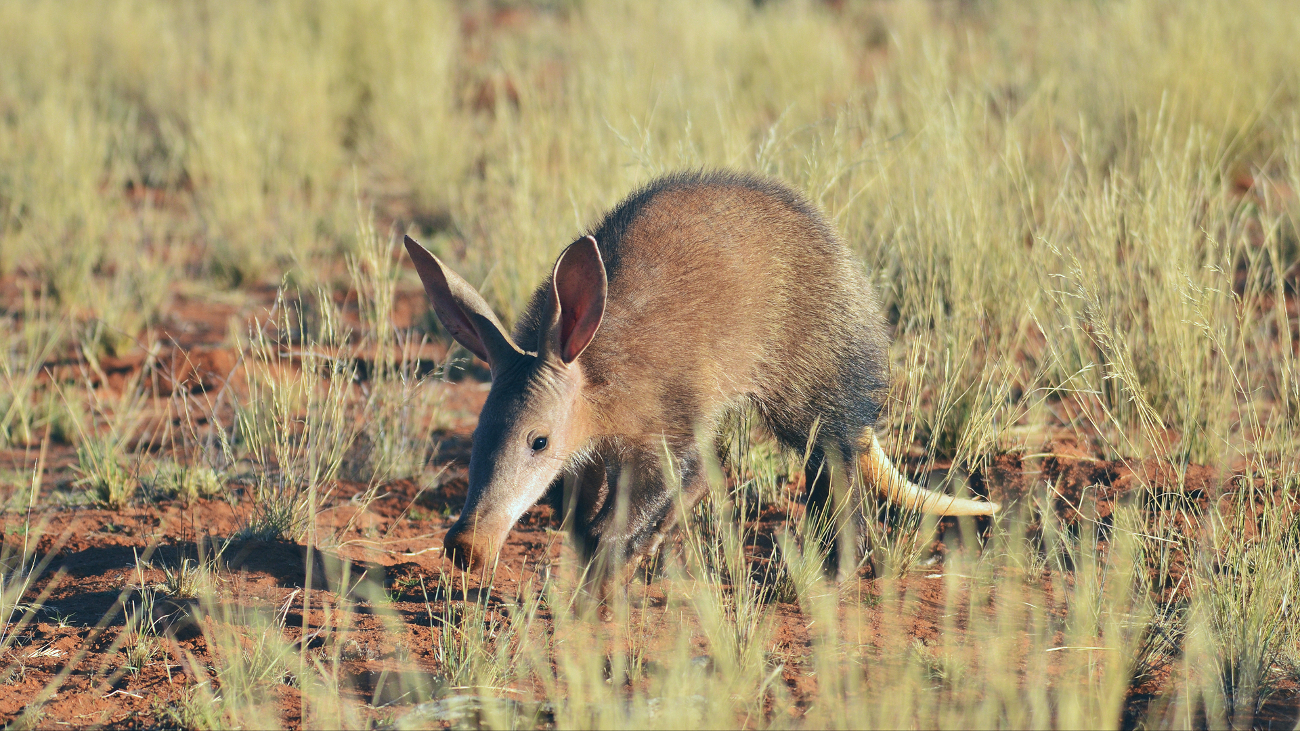- Home
- Conservancy
- Aardvark
Description
The aardvark is vaguely pig-like in appearance. Its body is stout with a prominently arched back and is sparsely covered with coarse hairs. The limbs are of moderate length, with the rear legs being longer than the forelegs. The front feet have lost the pollex (or 'thumb'), resulting in four toes, while the rear feet have all five toes. Each toe bears a large, robust nail which is somewhat flattened and shovel-like, and appears to be intermediate between a claw and a hoof. Whereas the aardvark is considered digitigrade, it appears at time to be plantigrade. This confusion happens because when it squats it stands on its soles.
An aardvark's weight is typically between 60 and 80 kilograms (130–180 lb). An aardvark's length is usually between 105 and 130 centimetres (3.44–4.27 ft), and can reach lengths of 2.2 metres (7 ft 3 in) when its tail (which can be up to 70 centimetres (28 in)) is taken into account. It is 60 centimetres (24 in) tall at the shoulder, and has a girth of about 100 centimetres (3.3 ft). It is the largest member of the proposed clade Afroinsectiphilia. The aardvark is pale yellowish-gray in color and often stained reddish-brown by soil. The aardvark's coat is thin, and the animal's primary protection is its tough skin. Its hair is short on its head and tail; however its legs tend to have longer hair. The hair on the majority of its body is grouped in clusters of 3-4 hairs. The hair surrounding its nostrils is dense to help filter particulate matter out as it digs. Its tail is very thick at the base and gradually tapers.
Fun Facts
Aardvarks live for up to 23 years in captivity. Its keen hearing warns it of predators: lions, leopards, hunting dogs, hyenas, and pythons. Aardvarks can dig fast or run in zigzag fashion to elude enemies, but if all else fails, they will strike with their claws, tail and shoulders, sometimes flipping onto their backs lying motionless except to lash out with all four feet.
They are capable of causing substantial damage to unprotected areas of an attacker. They will also dig to escape as they can, when pressed, dig extremely quickly. Their thick skin also protects them to some extent.
